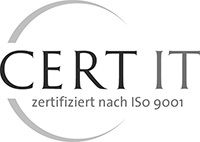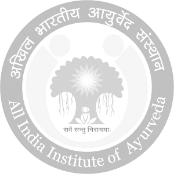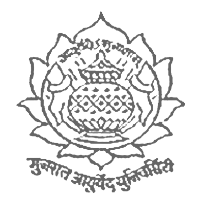Article by Kerstin Rosenberg, Head of Department for Ayurveda Psychology and Nutrition at the European Academy of Ayurveda.
Our modern life is characterized by many stress factors, which not only affect the physical health, but can also lead to mental and psychological illnesses. Thus, more and more people suffer from stress-related and psychosomatic complaints that require psychotherapeutic treatment.
A major speciality of Ayurvedic medicine is the holistic treatment of psychologically stressful symptoms such as depression, burnout or sleep disorders. The Ayurvedic therapy approach for all psychological, psychiatric and stress-related illnesses is based on 3 pillars: 1. physical measures for cleansing (Pancakarma) and energy strengthening (Rasayana) 2. psychological support through Ayurvedic talk therapy (Sattvavayaja) 3. medicinal herbs (Medhya), meditation and prayer as supporting measures for the individual healing process.
The role of nutrition for the psycho-mental balance should not be underestimated. With what we eat and how we prepare it, we have a direct influence on the quality of thoughts, feelings and the ability of the mind to cope with stress. In this sense, a healthy diet tailored to mental needs is the best prevention against mental and stress-related illnesses. However, if there are already manifested symptoms on the mental level, targeted diets and medicinal herbal formulations can also alleviate or even eliminate the symptoms.
Sattvavajaya is the Ayurvedic psychology, which together with the rational healing methods and spiritual therapies is the foundation of the entire Ayurvedic medicine. To understand and treat psychological ailments in the Ayurvedic context, it is necessary to know the basics of Sattvavayaja. These describe in detail the nature, functions and disturbing factors of the mind (Manas) as well as the mental qualities (Atman, Buddhi) of the human being, which we will only explain here by way of introduction in order to provide access to the practical therapy strategies for psycho-mental balance. Pathogenic factors of the body are Vata, Pitta and Kapha, while Rajas and Tamas are those of the mind . Caraka Samhita, p ̈.I.57
Fundamentals of Ayurvedic psychology and psycho-dietetics.
Just as our body is governed by the three doshas, three mental forces also determine mental health or illness. The so-called gunas are also called the doshas of the mind, and their manifestations determine the emotional and intellectual qualities, interests, weaknesses and strengths of our psyche. Thus, our entire mental constitution (Manas-Prakriti) and its disorders (Manas-Vikriti) are based on the three attributes of the mind Tamas, Rajas and Sattva.
Sattva is the life-sustaining principle of the mind and embodies the balanced ideal state of mental and spiritual powers. If a person is characterized by a high Sattva content in his personality, he has a friendly and peaceful nature with a high sense of moral values and mental strength.
Rajas stands for the principle of activity of the mind. Strong desire for movement on the physical and mental plane, emotional excitement in the form of aggression and passion, and high intelligence are typical characteristics of rajasic personality.
Tamas stabilizes the psyche and causes non-activity of the mind. Thus mental process is slowed down by too much tamas, resulting in ignorance, mental and psychomotor sluggishness, and tendency to depressive tendencies. A disturbance of the mind, from the Ayurvedic point of view, is always due to an imbalance of the three gunas. Here, rajas and tamas are considered negative attributes that destabilize and weaken the mind. Sattva, on the other hand, has the ability to balance the disturbing factors that arise from an excess of rajas or tamas, thus stabilizing and strengthening the psyche. In this sense, the entire Ayurvedic medicine and psychology for psycho-mental health is based on Sattva-promoting measures. These include special dietary rules (sattva ahara), behavioral recommendations (brahmacharya), and herbal formulations (medhya) that strengthen the sattvic qualities of the mind.
| Gunas | Typical qualities and characteristics of the personality |
| Sattva | moral strength, compassion, kindness, patience, tolerance, helpfulness, truthfulness, purity, adaptability, seldom mental disorders, pleasure in study and good knowledge, good memory, contentment |
| Rajas | Impatience, many desires and covetousness, dissatisfaction, passion, greed, sadness, intolerance, jealousy, timidity, aggression, pessimism, addiction to criticism, big ego, strong desire for attractions and distractions |
| Tamas | Ignorance, indolence, low temperament, greed for primitive things, marked lack of energy and depressive tendencies, weak intelligence, impaired memory |
Sattva-Chikitsa, Ayurvedic psychotherapy, considers mental illnesses such as burnout, anxiety, compulsions, depression or insomnia always arise from an imbalance of rajas and tamas and a lack of sattva. Triggered by a wrong diet and lifestyle, overstimulation of the sense organs as well as mental stress factors, the natural regulators of mental balance are disturbed. Also involved in the psychopathogenic process are the Manohava Srotas, the circulation channels for the subtle mental processes. If their function is impeded by emotional blockages, rajas or tamas increase.
Mental illnesses require in their treatment a differentiated diagnosis and therapy of Manas, the mind in its various functions. These, with their connection of sensory impressions, thoughts, feelings and memories, lead to what makes up our individual psyche: that we process and evaluate the impressions that affect us and form emotions and actions as a result.
Vedic philosophy and Ayurvedic psychology always consider the mind (Manas) in connection with the senses and motor activity (Indriya) with the soul (Buddhi), in which the discerning power associated with the true self (Atman) resides. Higher insights and realizations arise from the union of manas and buddhi, which require a sattvic milieu in order to positively implement (manas) the positive choices (buddhi). Manas, the mind has five levels to perform its functions:
- Chintya - visualizing information, recording experiences in the form of thoughts.
- Vicharya - processing information gathered through experiences.
- Uhya - to speculate, hypothesize, formulate thoughts based on the information analyzed
- Dhyeya - arriving at focused conclusions.
- Sankalpya - engaging in creative thinking.
For Manas to perform its functions in good quality, a high degree of Sattva is required. If rajas dominates the mind, its thoughts are very active but ineffective because the transmission of information to buddhi, the actual decision-making centre, is disturbed. If, on the other hand, there is too much tamas, the mental processes are slowed down or stopped. No processing of the information takes place, so that no decisions and impulses for action can occur.
Buddhi, the discriminating faculty of the mind, is the most important aspect in the psychotherapeutic process, since all mental illnesses result from buddhi. According to our individual life history with all the memories and experiences of the past, each person has created his or her very own "evaluative grid" from whose perspective all current information and experiences are evaluated. If the discrimination (Buddhi) is negatively coloured by painful and unprocessed experiences or traumas, Manas automatically receives wrongly evaluated information, which can lead to painful and pathological thoughts, feelings, states of agitation or delusions.
Healing approaches of Ayurvedic psychotherapy
Ayurvedic psychotherapy bases its healing approach on two elemental qualities of Manas: Oneness and Subtlety.
Unity is the quality of the mind to be able to focus on one thing at a time. In the context of psycho-pathologies, the mind fixates on negative, which leads it to its disorders. Now an attempt is made to release these fixations with the help of thought control and transformation and to direct the mind towards positive things. If one succeeds in directing the attention to Sattva-strengthening impulses, the pathological imprints can be transformed.
Subtlety describes the subtle, all-pervading power of memories, thoughts and feelings, which cannot simply be switched off and often put a torturous strain on psycho-mental well-being. Especially when the mind is in a weak, stressed state, its resistance to negative influences is weakened and the danger of a renewed fixation on disease-causing factors is particularly high.
With sattva-strengthening dietary and behavioral rules, the mind can evolve from its weak state (avara) to medium strength (madhyam) to a strong mind (pravara). Elementary in the sattvic diet is a fresh, natural and vegetarian food, which is lovingly prepared and taken in a calm atmosphere. In addition, some foods have a particularly Satta-promoting influence on psycho-mental well-being.
Foods that are particularly good at strengthening Sattva
| Particularly recommended foods | Special effect |
| Fruits | Dates, raisins, pomegranate, grapes, figs | Increase mental stress and performance |
| Vegetables | Leafy vegetables, bottle gourd, snake cucumber, bitter cucumber, zucchini, sweet potato, yams | Bitter vegetables promote mental activity and clarity |
| Grains | Barley, wheat, rice | Are easily digestible and promote contentment |
| Legumes | Mung beans, red lentils | Strengthen body and mind |
| Nuts | Almonds, walnuts | nourish the brain |
| Oils/Fats | Ghee, butter, sesame oil | build up ojas and nourish the mind |
| Spices | ajwine, hing, rosemary, fenugreek seeds, ginger | calm Vata, reduce Tamas and promote consciousness |
| Other | Milk, honey, ayurvedic buttermilk | Milk is the most valuable food to build up Sattva and Ojas |











